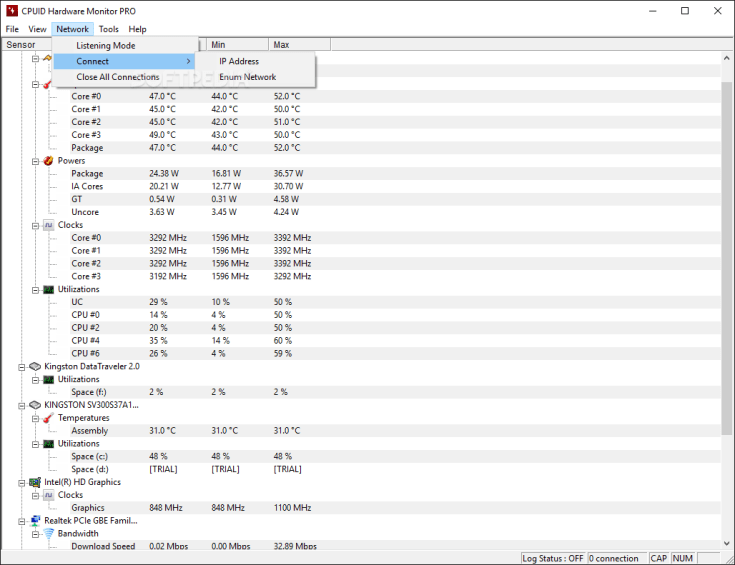HWMonitor vs. Other Software: How It Stacks Up

One of the most complete tools for tracking the functionality and temperatures of the parts of your laptop is HWMonitor. Data like frequency, humidity, voltage, amperage, power usage, and device activity are all visible in it. The motherboard, processor speed, graphics card, drives for storage, and fans are some of the parts that this allows you to monitor. With each of these, you can review the present value, revised once every second, and the highest and lowest values that have been witnessed since the software opened.
The majority of Winbond ICs and the most popular sensor chips, including the ITE IT87 family, may be handled by HWMonitor. HWMonitor can also read HDD temperatures using S.M.A.R.T. and contemporary CPU on-die core sensor technology. Additionally, it can read the GPU and video card voltages. Additionally, HWMonitor supports specialized hardware monitors like the Gigabyte ODIN power supply and ABIT uGuru. Monitors with special gadgets, such as the Abit uGuru.
Overview of HWMonitor
A software monitoring application called HWMonitor reads the primary health sensors on PCs. It will read the primary health monitors on the system and give you comprehensive details about them. The primary health monitors on your computer, such as fan speed, voltage, and the environment, are read by HWMonitor. This feature can be helpful when determining how much stress the computer is under when using certain demanding apps. The resulting report contains a wide range of information, including additional details about the display adapter.
A monitoring program called HWMonitor assists you in obtaining crucial data on the main health monitors on your computer, such as climate, voltage, and fan speed. This tool is created by CPUID, provides an easy-to-use interface, and works with both contemporary CPUs and popular sensors. It allows you to keep track of the primary performance metrics of the computer’s motherboard. The processor, the video card, the memory that is being used, and the amount of storage drives, including SSDs and hard drives.







